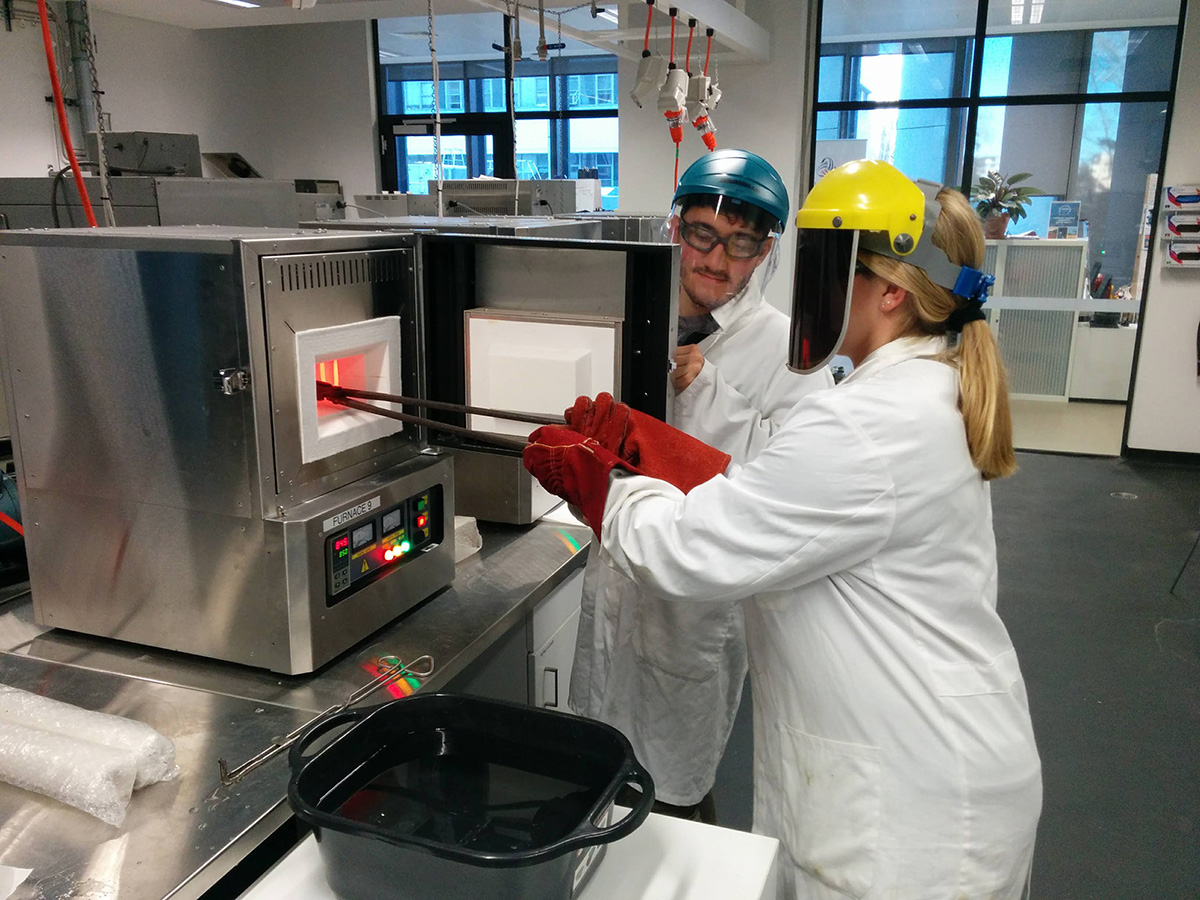Bassman and Students File Provisional Patent on Alloy Family
May 28, 2020
Professor of Engineering Lori Bassman, five Harvey Mudd College students, and two of her University of New South Wales colleagues, Kevin Laws and Patrick Conway, have filed a provisional patent on a family of novel compositionally complex metal alloys that were developed over two years during summer research.
“The project goal was to develop alloys that could be a substitute for stainless steels,” Bassman says. Stephanie Blankley ’20, an engineering major, presented the team’s research on her poster, “Elimination of the Sigma Phase in a Compositionally Complex Fe-Cr-based System,” at The Minerals, Metals and Materials Society (TMS) annual meeting in February.
This is the third patent for an alloy family filed by Bassman, her HMC students and her UNSW colleagues. The most recent provisional patent includes contributions from Blankley, Doug Raigosa ’20 (engineering), Jackson Baker ’21 (engineering), Natalie Krieger ’21 (engineering), and Holly Frank ’20 (physics).
During summer 2018, Blankley and Raigosa conducted experiments to determine that a small (5 atomic percent) addition of aluminum to iron-chromium-manganese alloys resulted in a ductile crystal structure instead of a brittle, unusable one called sigma. The students conducted experiments to create alloys for Laws and Conway. In addition, in 2019, Blankley, Baker and Krieger refined alloy compositions and did quantitative material property tests.
In preparation for summer 2019, Frank began working on first-principles computation to explain how aluminum destabilizes the brittle crystal structure and creates a more ductile structure as part of the work for her senior thesis. Three HMC alumni served as her co-advisors and mentors: Aurora Pribram-Jones ’09, Jonas Kaufman ’17 and Adam Shaw ’18.
These alumni also co-advised Emily Hwang ’20, who completed a chemistry thesis that used computation to study a different family of novel alloys. Hwang won best undergraduate poster in the Structural Materials Division at the TMS conference. Emma Cuddy ’21 (physics) and Julianne Lin ’20 (CS/math) also contributed to Hwang’s work.
Since 2009, Bassman has brought students to the School of Materials Science and Engineering at the University of South Wales each summer to help advance the group’s research on alloys. Her work is supported by several National Science Foundation grants and the Jude and Eileen Laspa Fellowship in Applied Mechanics.
“We are grateful for the Laspa Fellowship to support the work we will do even though we can’t go to Australia this summer,” Bassman says.
Her plan for summer 2020 was to have Cuddy return to carry on her work and have four new students (engineering and physics majors from the Class of 2022) conduct corrosion experiments and continue first-principles computation projects on the new alloy family. With international travel restrictions still in place, all will be conducting research at home, with those who would have done experimental work in Australia instead collaborating with Conway on thermodynamic modeling of the alloys.
